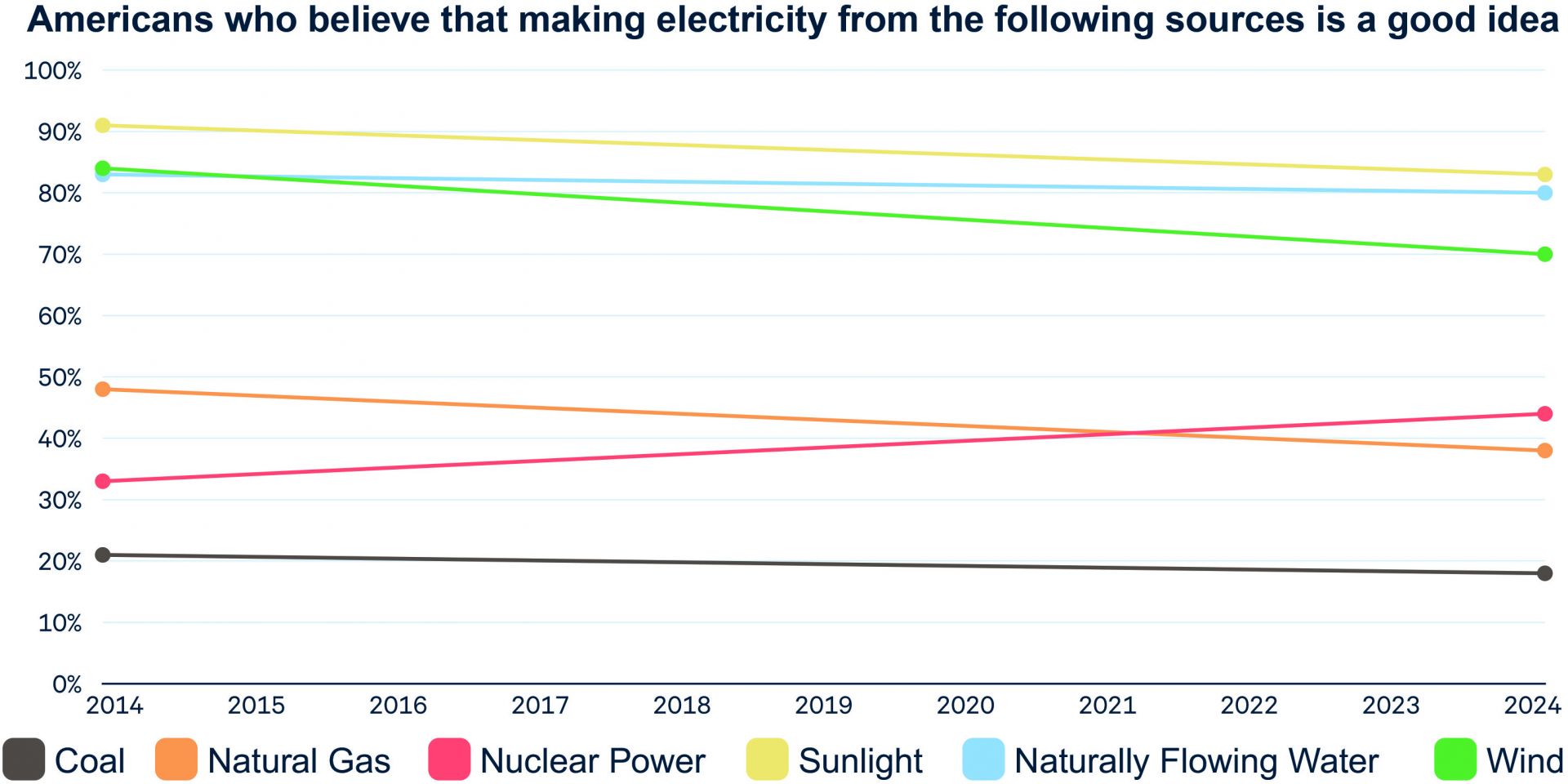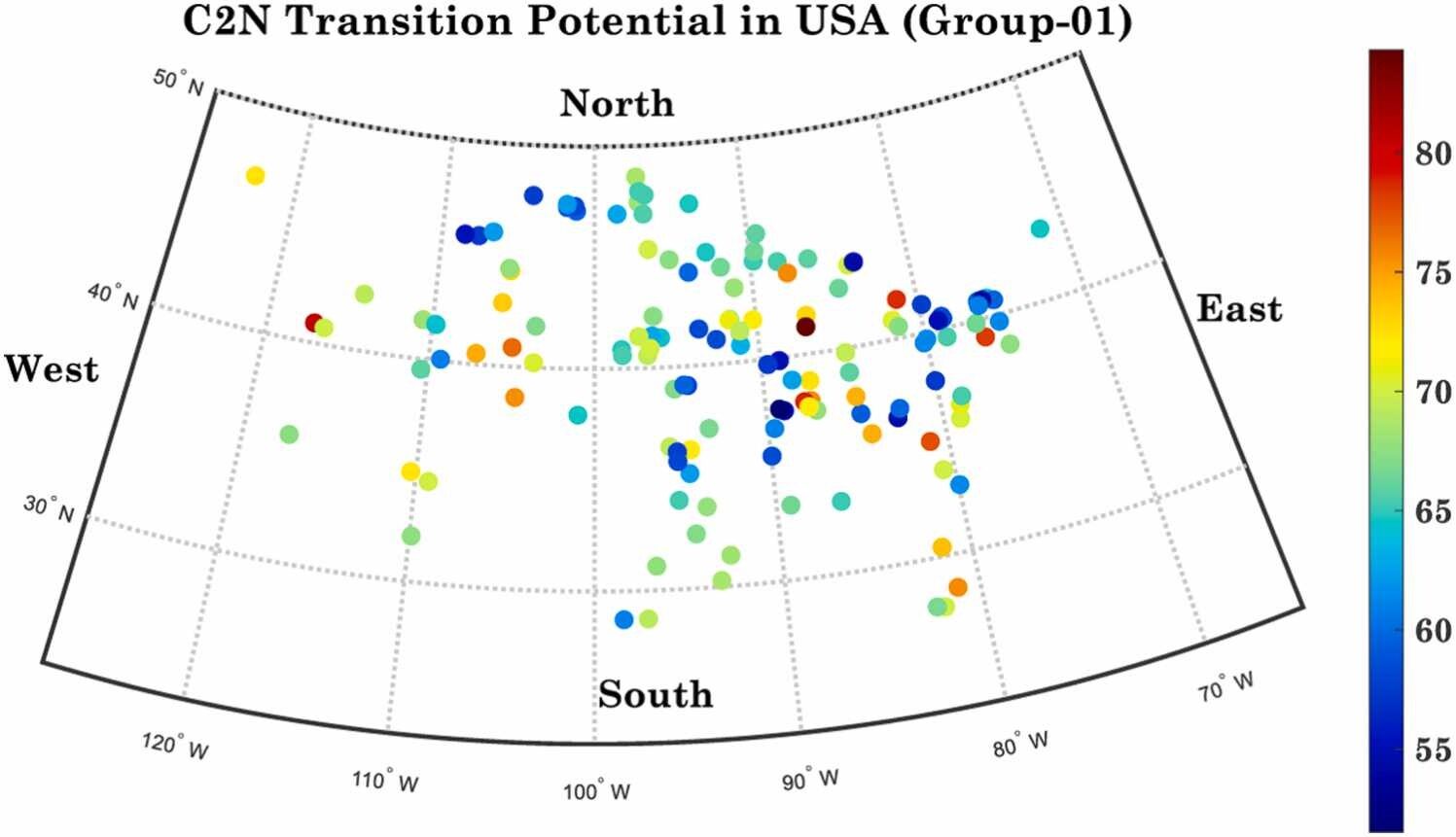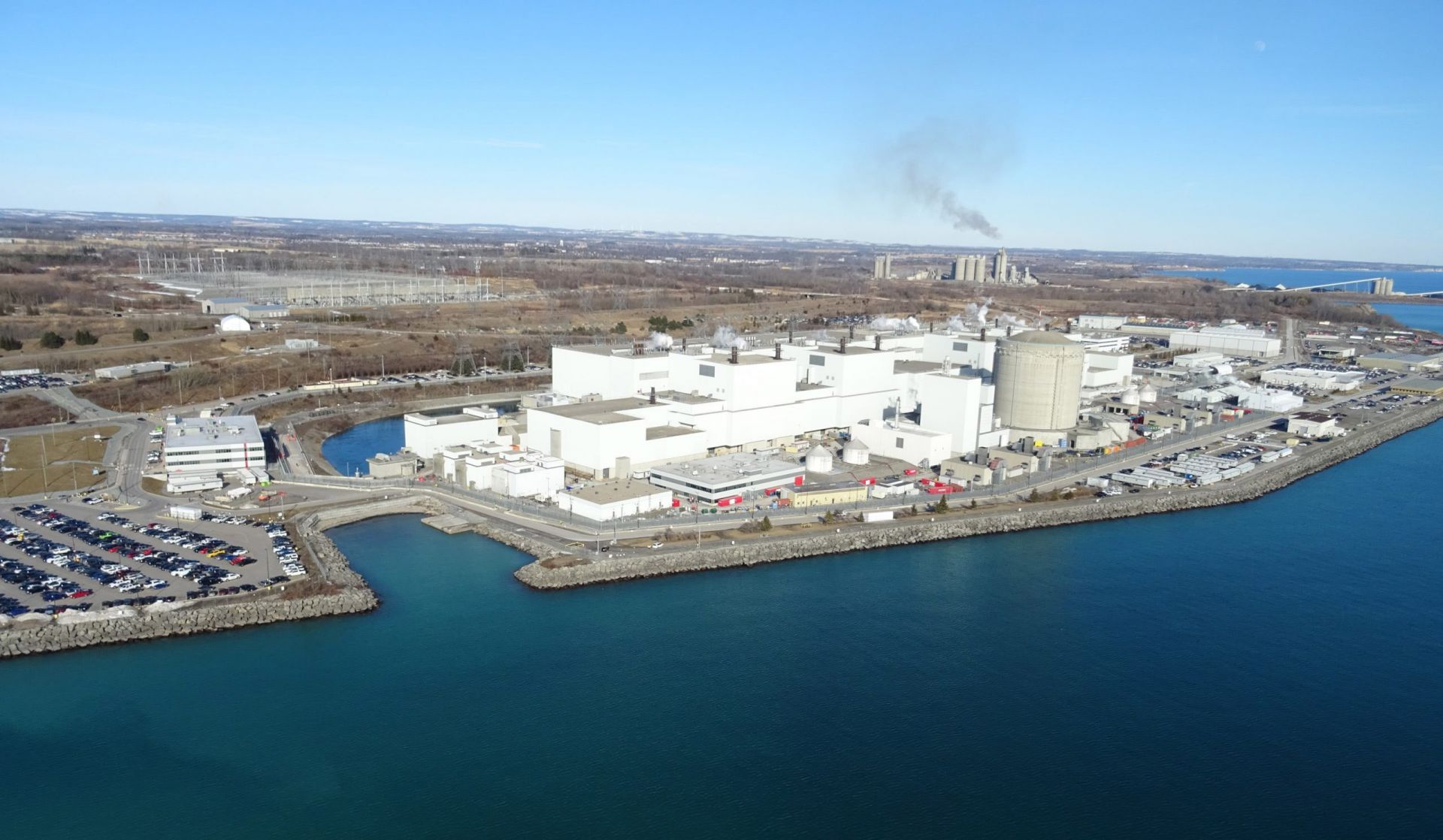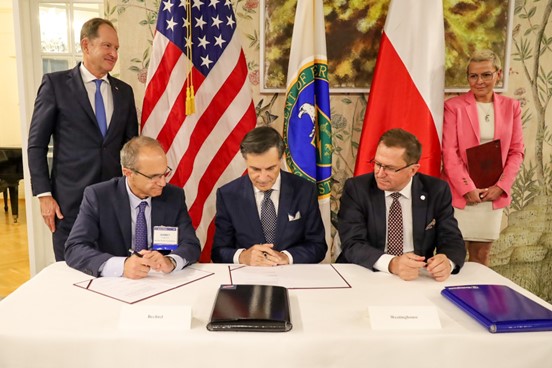Nuclear was the only energy source to show a boost in public opinion over the past decade. (Graph: Jon A. Krosnick and Bo MacInnis, Climate Insights 2024: American Understanding of Climate Change; Washington, DC: Resources for the Future; 2024.)
A new report based on what its authors call “the definitive American public opinion surveys on climate change and the environment” has found a statistically significant increase in the percentage of survey respondents who think nuclear power is a good way to generate electricity, relative to a survey that asked the same question in 2013. That’s despite evidence that “Americans’ views on climate change have remained remarkably steady.” The new report, Climate Insights 2024: American Understanding of Climate Change, is the product of a 27-year polling partnership led by the Political Psychology Research Group at Stanford University and Resources for the Future (RFF), and it was released July 15.
The color-coded scatterplot shows the feasibility of coal-to-nuclear transitions at smaller coal plants (1,000 MWe or less) across the United States, plotted by latitude and longitude. Red and warm colors represent the high feasibility. (Image: Muhammad Rafiul Abdussami, Fastest Path to Zero, University of Michigan)
Comprehensive analysis of 245 operational coal power plants in the United States by a team of researchers at the University of Michigan has scored each site’s advanced reactor hosting feasibility using a broad array of attributes, including socioeconomic factors, safety considerations, proximity to populations, existing nuclear facilities, and transportation networks. The results could help policymakers and utilities make decisions about deploying nuclear reactors at sites with existing transmission lines and a ready workforce.
The U.S. Treasury Department building in Washington, D.C.
Two weeks remain for public comments on the proposed language in the new federal rules proposed for hydrogen production tax credits. A public hearing on the regulations is scheduled for March 25, 2024.
While the federal proposal is largely popular among environmentalists and some pronuclear advocates, there are concerns from others that it would cut out opportunities for existing legacy nuclear plants that are well-equipped to convert part of their operations to hydrogen production. The proposed rules require hydrogen to come from newly built resources—the largest obstacle for legacy nuclear sites but further incentive to deploy new reactors—and would permit using natural gas if employed with carbon capture and sequestration.
Duke Energy Center (tall silver building at right) in Charlotte, N.C. (Photo: Duke Energy)
Duke Energy has confirmed “limited” layoffs across its territories as part of a company reorganization focused on clean energy.
In a statement, the company said, “Duke Energy is entering the next phase of its clean energy transition, which calls for a transformative expansion and modernization of our clean energy grid. . . . . We are reorganizing for greater efficiency and cost effectiveness.”
Applause at the conclusion of COP28. (Photo: Kiara Worth/UN Climate Change)
The United Nations' Climate Change Conference of Parties (COP28) in Dubai, United Arab Emirates, closed on December 13 after debate on a “global stocktake” pushed negotiations a full day past the scheduled end date. Though advocates hoping for a phaseout of fossil fuels were ultimately disappointed and must settle for “transitioning away,” another first—after 30 years of global climate conferences—is the inclusion of nuclear energy among the zero-emissions and low-emissions technologies that still could, if deployment is accelerated, support deep reductions in greenhouse gas emissions to limit global warming to 1.5°C.
Kassym-Jomart Tokayev, president of Kazakhstan (standing), looks on as the commercial uranium fuel supply contract between ENEC and Kazatomprom is signed. (Photo: Kazatomprom)
On the margins of the COP28 climate conference in Dubai, UAE, this week, Barakah nuclear plant owner Emirates Nuclear Energy Corporation (ENEC) signed its first commercial uranium fuel supply contract with Kazatomprom, in addition to memorandums of understanding with two U.S.-based advanced reactor developers—TerraPower and GE Hitachi Nuclear Energy (GEH).
U.K. energy security secretary Claire Coutinho and South Korean minister for trade, industry, and energy Moon Kyu Bang, following the signing of the U.K.-ROK Clean Energy Partnership. (Photo: @ClaireCoutinho/X)
The United Kingdom has announced a new partnership with South Korea to accelerate the clean energy transition by strengthening cooperation on low-carbon technologies, domestic climate policies, and civil nuclear energy.
Signed November 22 in London by British energy security and net zero secretary Claire Coutinho and South Korean minister for trade, industry, and energy Moon Kyu Bang, the partnership promotes U.K.-South Korean business collaboration, addressing barriers to trade and encouraging mutual development of the two nations’ energy sectors.
An aerial view of Ontario’s Darlington Nuclear Generating Station. (Photo: OPG)
In response to Ontario’s ambitious nuclear development plans—including the plan by Ontario Power Generation to construct four small modular reactors at its Darlington nuclear site—Celeros Flow Technology has committed to expanding its Burlington, Ontario, facility to make it the first Ontario-based manufacturer of nuclear-qualified pumps, OPG announced last week.
Romania’s Cernavoda Units 1 and 2. (Photo: Nuclearelectrica)
AtkinsRéalis subsidiary Candu Energy and the Canadian Commercial Corporation, a federal crown entity, have announced the receipt of an award letter from Romania’s Nuclearelectrica for the provision of engineering, technology, and procurement of tooling and reactor components in support of the Cernavoda Unit 1 life-extension project.
Sen. Sue Rezin (at lectern), speaking on H.B. 2473 on Tuesday. (Photo: Sue Rezin)
While an initial bill aimed at lifting the decades-old ban on new nuclear construction in Illinois was vetoed in August by Gov. J. B. Pritzker, the state’s nuclear-friendly legislature is giving the effort another shot, opting to pursue new legislation rather than a veto override.
The Integrated Effects Test at TerraPower’s laboratory in Everett, Wash. (Photo: Southern Company/TerraPower)
Southern Company, TerraPower, and Core Power (a U.K.-based firm focused on developing nuclear technologies for the maritime sector) have commenced pumped-salt operations in the Integrated Effects Test (IET) facility, the Atlanta, Ga.-based utility announced Tuesday, marking another milestone in the development of TerraPower’s first-of-a-kind, Generation IV Molten Chloride Fast Reactor (MCFR).
At the Bechtel/Westinghouse consortium agreement signing ceremony at the U.S. embassy in Warsaw, were, from left, U.S. ambassador to Poland Mark Brzezinski; Ahmet Tokpinar, general manager of Bechtel’s nuclear power business line; Elias Gedeon, senior vice president for commercial operations at Westinghouse; Mirosław Kowalik, president of Westinghouse Poland; and Anna Łukaszewska-Trzeciakowska, Poland government plenipotentiary for strategic energy infrastructure. (Photo: Bechtel)
Westinghouse Electric Company and engineering, construction, and project management firm Bechtel on September 20 announced the signing of a consortium agreement to partner on the design and construction of Poland’s first nuclear power plant.






.jpg)










